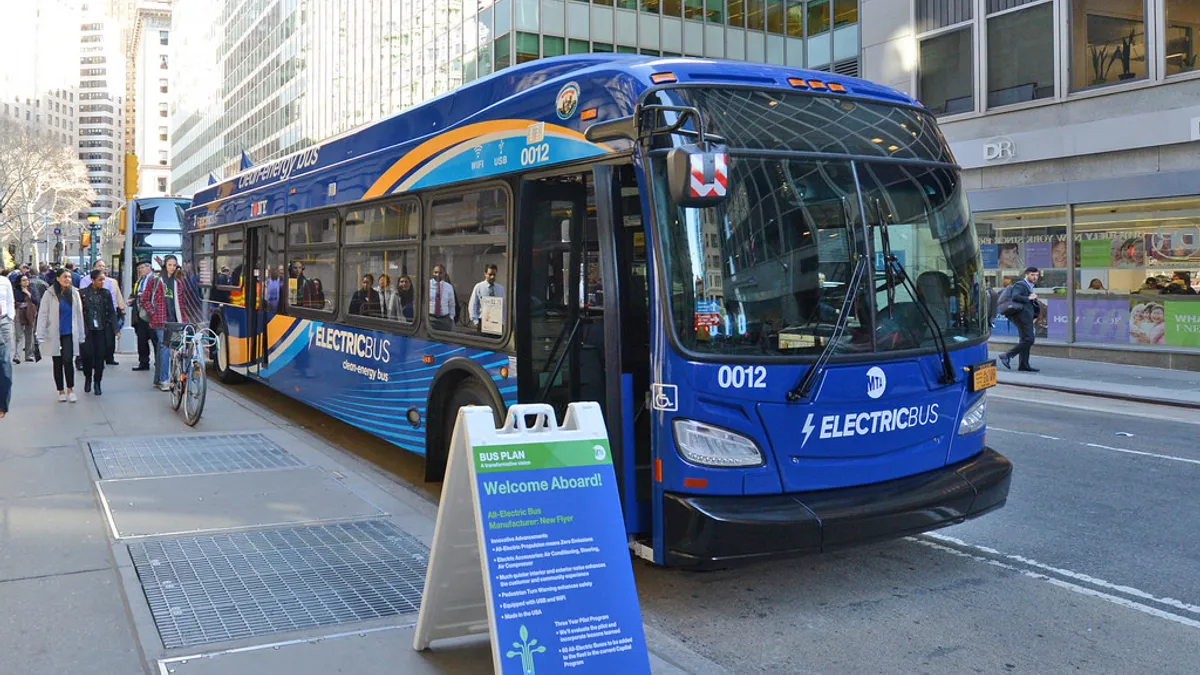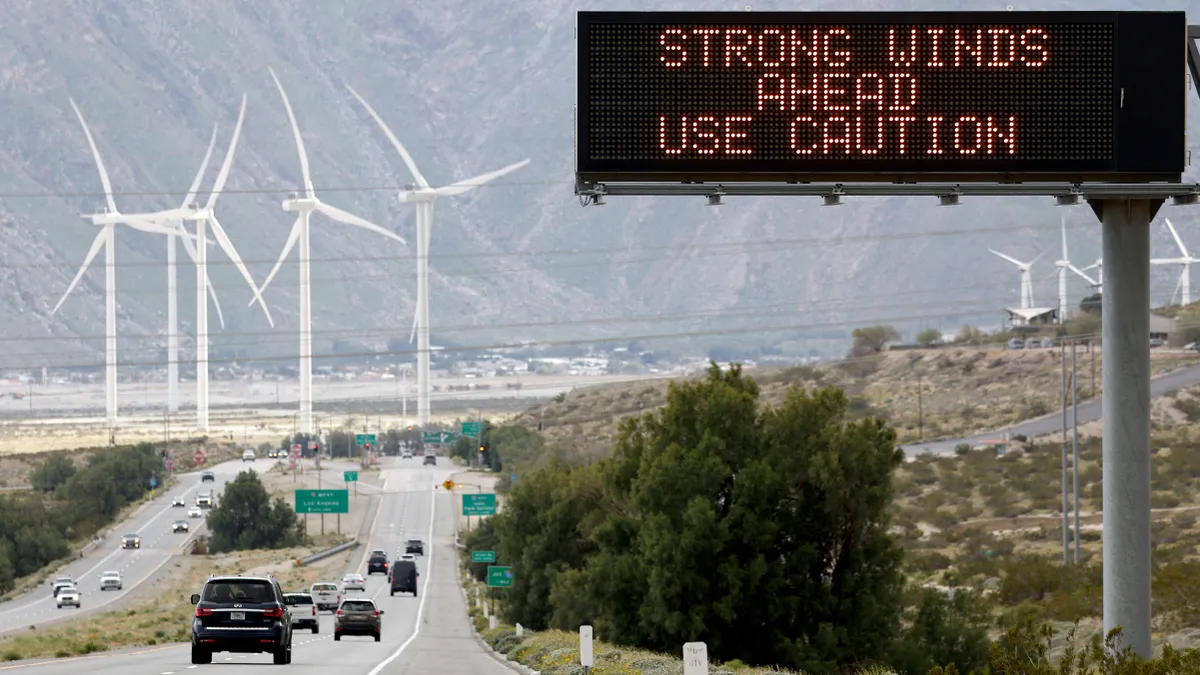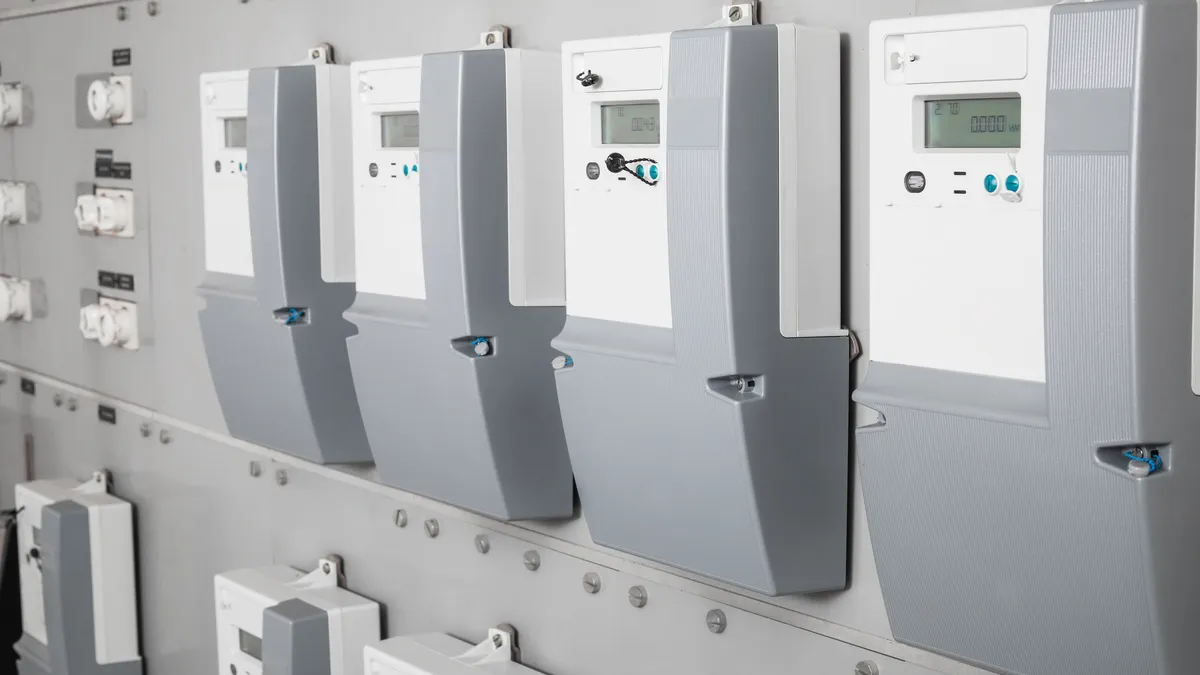As states focus on goals to lower their carbon emissions, cities and municipalities are increasingly expressing interest in clean transportation, including electric bus fleets. Utilities are also becoming more involved as transit agencies consider pilot programs and technological improvements promise longer battery ranges and faster charging.
The growing interest in electric buses over the last two years has led investor- and public-owned utilities alike to focus on accommodating charging infrastructure.
Electric bus charging adds a new layer to the infrastructure puzzle that utilities are trying to solve with consumer electric vehicles through planning and installing. One bus manufacturer, New Flyer, is parlaying its understanding of bus performance and capabilities to craft strategies for deploying bus charging equipment.
"The very essence of having a successful electric bus system is really understanding how the bus is going to operate," David Warren, New Flyer's director of sustainable transportation, told Utility Dive.
The company has helped supply buses to transit agencies around the country, including a pilot for New York City Transit (NYCT) featuring five electric buses that never have to make their way back to the depot.
Transit agencies are evaluating the charging strategies they want for their bus lines, including combinations of depot charging (typically at the end of the day) or en route charging. The latter is the basis of New Flyer's NYCT charging system, which promises to utilize a 24/7 bus route most economically.
However, choosing to deploy high-powered energy chargers en route needs to be done carefully to ensure stations have high utilization, according to Warren. The careful planning is rewarded by favorable economics for the chargers as utilities craft special demand charges for electric vehicle charging.
Importance of working with a utility
Looking down the barrel of multi-sector electrification — from transport, building heating and industrial operations — utilities are trying to understand the best way to affordably increase much-needed charging infrastructure.
"The demand for high-powered, fast en route charging [for electric buses] can be on the order of hundreds of kilowatts," Nick Nigro, founder of Atlas Public Policy, told Utility Dive.
Atlas' EV Hub tracks deployment and EV policy, including the upswing in adoption of electric buses. State agencies are allocating a sizeable share of the billions acquired in the settlement of the Volkswagen emissions cheating scandal for electric buses, Nigro said. Nearly all the public funding awards for electric bus development come from the Federal Transit Administration's Low or No Emission Vehicle Program, Nigro said.
Buses with longer routes will need to be recharged en route.
"Some transit agencies are going to want to test the [charging] technology in heavy duty use cases, in order to assess its viability," Nigro said.
"The bus loads are quite large, you know, compared to their traditional facility loads," Lang Reynolds, Duke Energy's electric transportation director, told Utility Dive. "And so we want to make sure that we're helping them get through the [deployment] process in a way that's quick and also cost effective."
If fast-charging en route infrastructure for buses is set in locations with infrequent visits from fewer buses, transit agencies could be losing money for the high-powered hubs. This makes planning essential to guarantee high-traffic charging locations.
"The whole economics [of transitioning to electric buses] can turn upside down if you're not careful about demand charges," Warren said.
Planning for a fully electric fleet has been difficult as utilities and transit agencies are focused on first adding initial charging infrastructure. A recent report from the Union of Concerned Scientists highlighted 11 utility-led programs to advance transit and school bus charging infrastructure.
Beyond advancing initial deployment, utilities and transit agencies are considering risks such as poorly maintained sites or losing a charging vendor because they're going out of business, Reynolds said.
"The key for transit agencies is going to be to utilize these charging stations so that [the costs to charge vehicles] can be spread over a lot of buses, and so those costs can go down and can be very reasonable," Warren said.
In January, New Flyer unveiled a new program, Connect 360, which is currently being used in the NYCT pilot. The data program will show a particular bus run and how much energy the vehicle consumed, the range of the vehicle that remains and other information like the low voltage (lighting, electric doors) and high voltage (air conditioning) accessories in the bus.
Planning New York City's pilot
New Flyer's value, according to Warren, is partly rooted in its expertise in designing charging systems as well as buses. Transit agencies do not need to hire the bus manufacturer with their own established plans of en route or depot-based charging: New Flyer makes recommendations based on routes. The company launched a new service in January, New Flyer Infrastructure Solutions, to support infrastructure planning and development as well as energy managemen
"When we started working with New York City, for instance, they told us exactly what routes the [electric] bus was going to operate on," Warren said.
NYCT's electric bus pilot, the M42, runs from the East River to the Hudson, right through areas known for traffic congestion, like Times Square and Grand Central Station.
It's technically a short distance, but the route selected for the pilot is notoriously tedious due to congestion, determined to be the slowest bus line in NYC for five non-consecutive years, according to the NYPIRG Straphangers Campaign and TransitCenter.
Based on the routes and the speeds of the bus, New Flyer determined the best method to charge the bus. The company brought engineers to observe the bus operation and performance and began to run simulations of electric buses on those routes, according to Warren.
New Flyer provides a recommendation and suggests alternatives for the size of the battery on the bus. Based on the shorter, congested ride, the five electric buses in New York have 150 kWh batteries paired up with en route charging. Other buses, like the ones New Flyer is developing in Minnesota have 450 kWh.
Each design configuration for electric bus and charging system will be unique based on the bus's typical use.
"Our goal is to put the right amount of batteries on the bus to match that sort of environment simulation," Warren said.
Once the customer agrees on the approach — including benefits from the engineering simulations New Flyer develops — New Flyer engages with the utility and construction firms on building the charging system.
"Utilities are a lot more engaged in this now," Warren said.
New Flyer typically invites utilities to participate in site walks in the first phase of a project, sharing power requirements and getting their input on capital investments.
"It's amazing how much can be done by being there, having your boots on, walking the site… really understanding where the power is coming from, where the chargers are going to go," Warren said.
When New Flyer entered the electric bus market three to four years ago, "all parties were essentially inexperienced on how to expedite the permitting," but now a lot more collaboration takes place among utilities and transit agencies, said Warren.
In NYC, New Flyer worked with ConEdison and Siemens, one of the charger suppliers that meets the company's requirements. The actual infrastructure in the city can take two and a half years to complete, which is more than double how long it takes to acquire buses, according to Warren.
"We've taken a very conservative approach to how we've done these projects," Warren said, in order for New Flyer to maintain market leadership.
Utilities understand that early communication with charging developers and transit agencies is a key priority for them.
"We definitely like to be involved as early as we can so we can help the transit agency to develop an effective plan and also understand how any kind of service upgrades might need to be done from the electric system," Reynolds said.
Within Duke's service region, North Carolina's Greensboro Transit Authority (GTA) is already working on incorporating electric buses. Duke is carrying out work to connect charging stations to electrical lines via underground trenches, according to GTA.
Long-haul planning
Buses don't need to be constantly charging throughout the day if they have bigger batteries. Many electric bus pilots are models that are meant to carry out their routes and then charge in the bus depot.
"Overnight charging in almost every circumstance is the preferred way of charging in most grids because of the existing assets that are on the grid that are idle," Nigro said.
One advantage of this form is that all of an agency's buses would be using the charging infrastructure at the same time, reducing the likelihood that the charging station is underutilized, especially once the electric fleet is developed.
"We're looking at having long-haul buses with off-peak charging," Darren Springer, general manager of Burlington Electric Department, told Utility Dive.
Vermont's largest municipally-owned utility is working with Green Mountain Transit to deploy electric buses in August in a pilot. Focusing on buses with long-duration batteries will ensure the buses don't need to recharge between different routes.
"I think the feeling is that the current electric bus fleet has the capability of running all the different routes that they would run in their system, whether they're local routes or commuter routes, from Burlington to Montpelier and back, and that there would not be the need to charge during the day," Springer said.
Investor-owned utilities are also seeing increased interest in electric buses. Within Duke's service regions, interest has really taken off in the last two years.
"Now, pretty much all of our transit agencies have expressed some level of interest, if not actually going ahead and buying buses already," Duke's Reynolds said.
"The fact that you now see California committing to basically transition their entire public transit fleet to only purchasing zero emission vehicles by 2030... that's your market signal for the investor, the investor in this technology," Nigro said.
However, some electric bus orders have been canceled in the U.S.
A notable example is Albuquerque, New Mexico, where a deal for 18 electric buses, 15 of which had already been delivered, got scrapped last November. Democratic Mayor Tim Keller cited safety concerns raised by the buses since October 2017 and problems with the vehicles' batteries and chargers. The rollout of the program has been delayed until August, 2019, as the transit authority seeks a deal for 10 electric buses with a new U.S.-based manufacturer.
However, Atlas' Nigro warns that the electric bus industry is too new to regard examples like Albuquerque's or NYC's as definitive 'case studies.'
"The challenge with those case studies, I think, is that you want to have some years under your belt before you look back... It's still so early that there aren't that many examples," Nigro said.






















